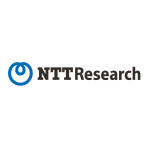Physicists to gain additional capability for system-level experiments on Coherent Ising Machine
SUNNYVALE, Calif.–(BUSINESS WIRE)–#TechForGood—NTT Research, Inc., a division of NTT (TYO:9432), today announced plans to double the size of its optical research facility in 2023. The expansion will accommodate the experimental needs of scientists in its Physics & Informatics (PHI) Lab who are studying Coherent Ising Machines (CIMs), which are networks of optical parametric oscillators (OPOs) programmed to solve problems mapped to an Ising model. (The Ising model is a mathematical abstraction of magnetic systems composed of competitively interacting spins, or angular momenta of fundamental particles.) The experimental work to be performed in the new optics lab, which is expected to be completed in October 2023, will impact theoretical investigations of CIM and Boolean satisfiability (SAT) problem-solving platforms. A well-known class of difficult problems that can be addressed with digital heuristics, SAT problems, are also a focus of the PHI Lab.
�We are excited to announce these expansion plans,� PHI Lab Director Yoshihisa Yamamoto said. �The new capabilities will enhance our in-house research and provide additional opportunities to collaborate with our partners, as we keep pace with evolving CIM architectures and a competitive landscape.�
NTT Research moved into its current Sunnyvale, Calif., headquarters in September 2021. This hybrid-remote smart workplace, named the NTT OneVision Center, features collaboration-focused spaces, working pods and offices for research staff. (See related press release.) The facility�s original 1,154 square-foot optics lab, which includes an equipment room for instruments, was built around the premise of investigating high-frequency soliton microcombs using hybrid integrated circuits and quantum simulation with exciton-polariton condensation. (Exciton-polaritons are quasi-particles; frequency microcombs are often referred to as optical rulers; and a soliton is a wave that maintains its shape while propagating at a constant velocity.) The new or second optics lab will measure 1,250 square feet. Configured as a separate room, it will support five or six researchers and ongoing experimental projects involving thin-film lithium niobite (TFLN)-based advanced optical devices, such as ultra-fast OPOs. Two of those scientists are Edwin Ng and Tim McKenna.
�Edwin is the key person, along with Yoshitaka Inui, in developing the new CIM principles, which we are currently working on theoretically and are planning to implement in the new lab as system-level experiments,� PHI Lab Deputy Director and Senior Research Scientist Satoshi Kako said. �Tim is another key person for TFLN-related projects, along with Marc Jankowski. The TFLN devices will play a crucial and indispensable role in forming the future optically based approaches to problem-solving.�
The PHI Lab�s mission is to use optical technologies to build simple, efficient and practical solvers for real-world problems by radically redesigning analog computers, both classical and modern, within the fundamental principles of quantum physics and brain science. As Dr. Yamamoto, et al., explained in 2020, in an article in Applied Physics Letters titled �Coherent Ising machines: Quantum optics and neural network perspectives,� this interdisciplinary research agenda can be regarded as a new field of academic study. (See related press release.) On the practical side, recently completed work on algorithms with the Tokyo Institute of Technology (Tokyo Tech) has improved the performance and scope of the CIM. (See related press release.) One of the first applications of this collaboration is compressed sensing, a signal processing technique used in medical imaging, astronomy and elsewhere, which requires extremely high levels of processing on existing computers to discard massive amounts of data with no useful information.
In addition to its work with Tokyo Tech, the PHI Lab is pursuing its ambitious goal through joint research with the following eight universities: California Institute of Technology (CalTech), Cornell University, Massachusetts Institute of Technology (MIT), Notre Dame University, Stanford University, Swinburne University of Technology, the University of Michigan and the University of Tokyo. It is also conducting joint research with the NASA Ames Research Center in Silicon Valley and 1QBit, a private quantum computing software company. For more insight into this novel area of basic research, please see Q&As with the following PHI Lab scientists: Thibault Chervy, Michael Fraser, Ryan Hamerly, Marc Jankowski, Satoshi Kako and Myoung-Gyun Suh.
About NTT Research
NTT Research opened its offices in July 2019 as a new Silicon Valley startup to conduct basic research and advance technologies that promote positive change for humankind. Currently, three labs are housed at NTT Research facilities in Sunnyvale: the Physics and Informatics (PHI) Lab, the Cryptography and Information Security (CIS) Lab and the Medical and Health Informatics (MEI) Lab. The organization aims to upgrade reality in three areas: 1) quantum information, neuroscience and photonics; 2) cryptographic and information security; and 3) medical and health informatics. NTT Research is part of NTT, a global technology and business solutions provider with an annual R&D budget of $3.6 billion.
NTT and the NTT logo are registered trademarks or trademarks of NIPPON TELEGRAPH AND TELEPHONE CORPORATION and/or its affiliates. All other referenced product names are trademarks of their respective owners. � 2023 NIPPON TELEGRAPH AND TELEPHONE CORPORATION
Contacts
NTT Research Contact:
Chris Shaw
Chief Marketing Officer
NTT Research
+1-312-888-5412
[email protected]
Media Contact:
Stephen Russell
Wireside Communications�
For NTT Research
+1-804-362-7484
[email protected]







